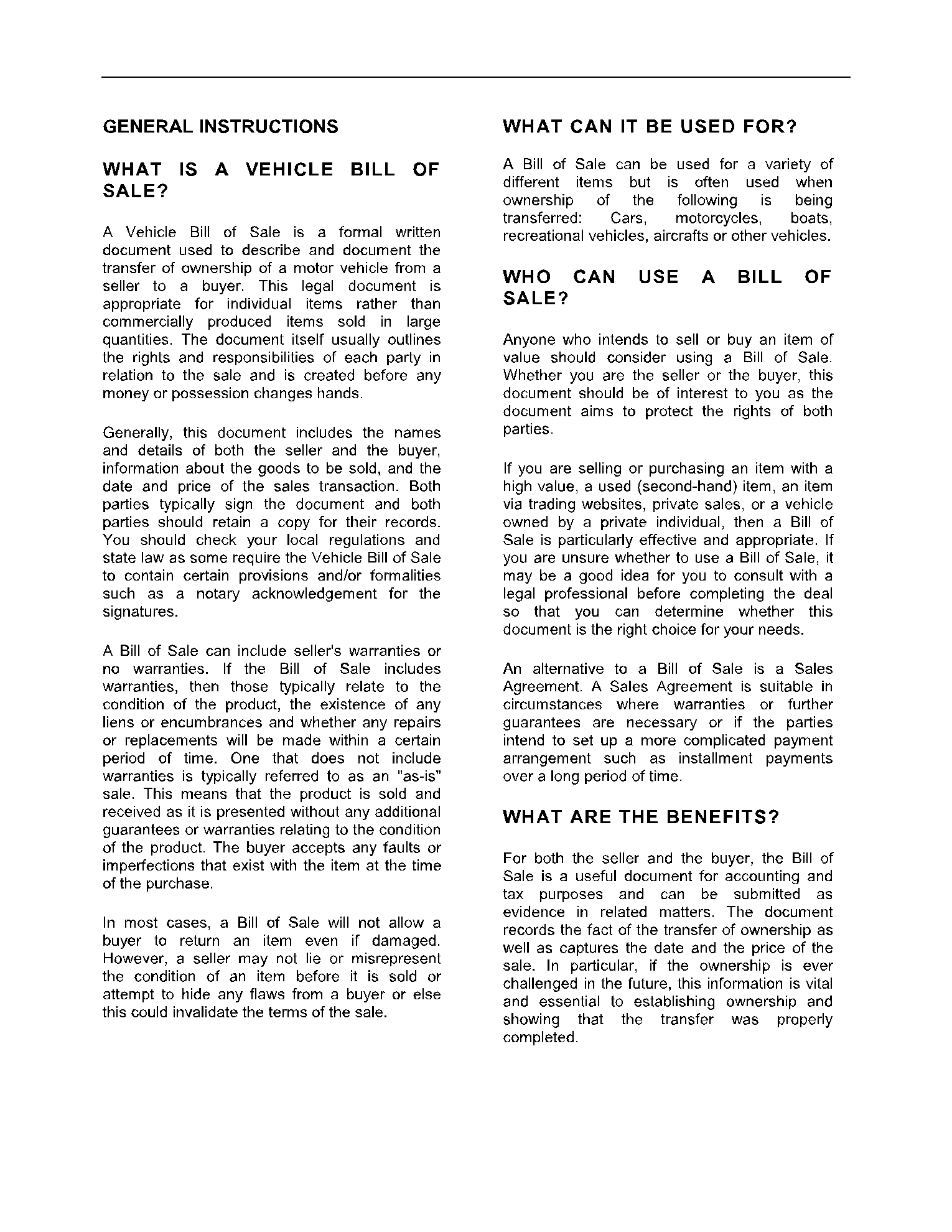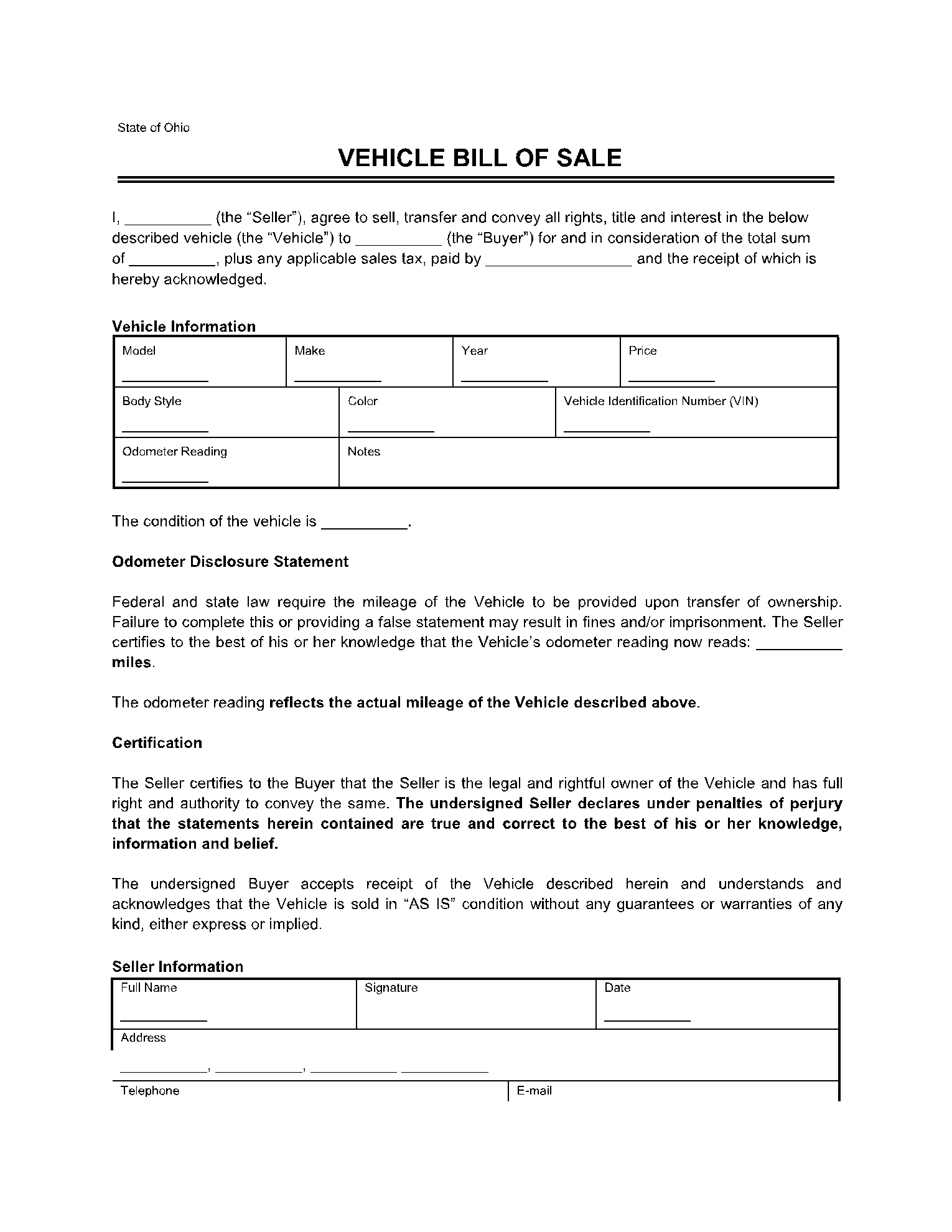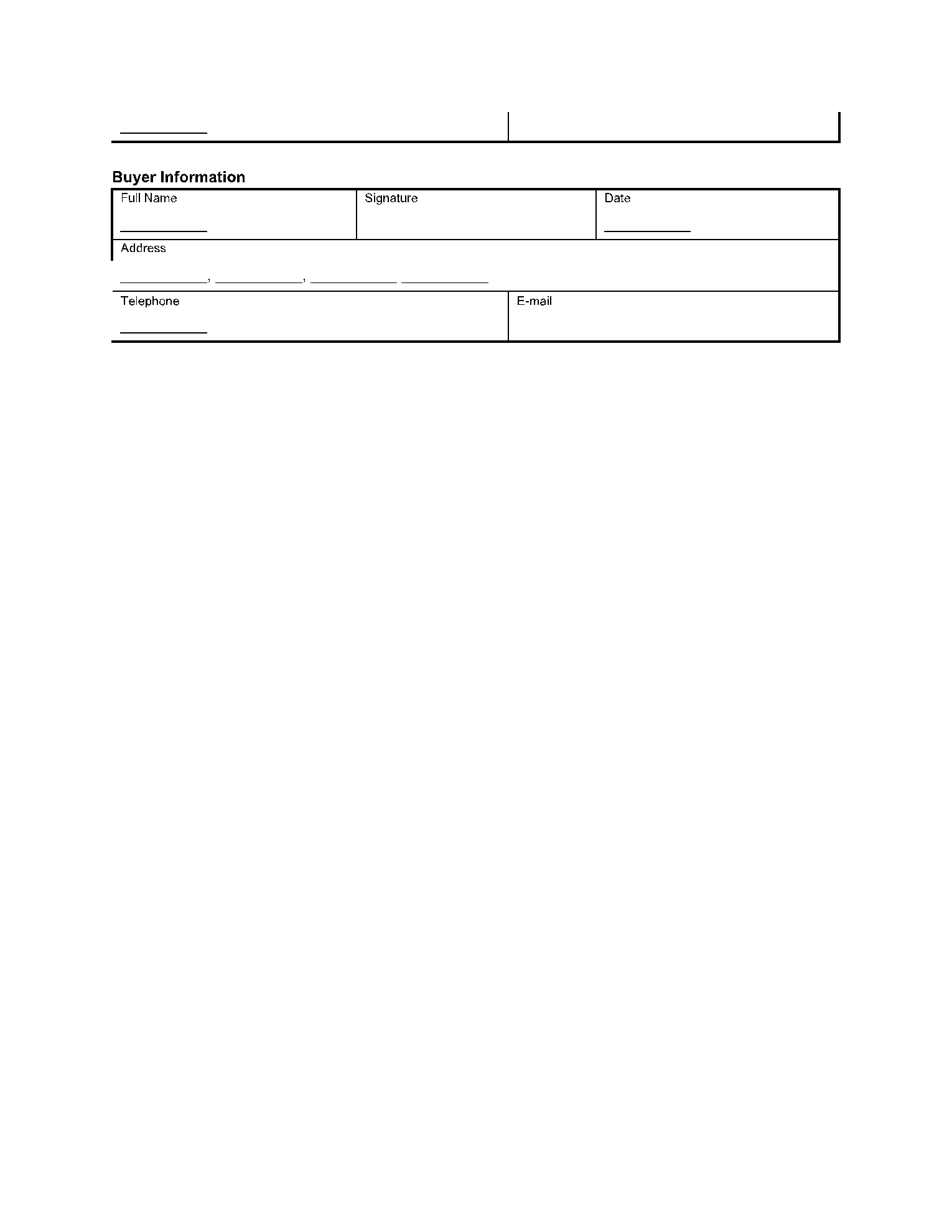Transactions of vehicles, in general, need to be accompanied by formal documents proving the change of ownership. The price is not the only reason; you also need that justifying document to register the vehicle you bought.
To sell a car in Ohio, you will have to issue an Ohio vehicle bill of sale as proof that a legal transaction concerning that particular vehicle was made.
The bill of sale Ohio form includes relevant information on the seller, the buyer, and the car that is purchased, including its identification number.
How to Register a Vehicle in Ohio?
Buying a vehicle only grants you ownership; if you also want to drive it on the roads of Ohio, you will have to register it under your name. The registration process is mandatory, regardless of how you got into the possession of the vehicle.
Whether you inherited it, received it as a gift, bought it from a dealership in another state, or from an individual, you still have to register it the same way.
It’s your responsibility to obtain all the necessary documents, including the Ohio bill of sale, and take them to the local BMW office in person. Here is the list of documents you need to gather:
- A notarized Ohio vehicle bill of sale.
- The title, also notarized at the time of the transaction.
- An Ohio driver’s license or social security card.
- The registration information and authorization to register (form BMV 5736), if it’s a leased vehicle.
- For new residents, a VIN Inspection Statement is mandatory.
- Emissions and safety inspections are required in some counties.
- You must prove that you have acquired auto insurance.
- You will have to pay titling and registration fees.
What Is Included in an Ohio Vehicle Bill of Sale?
Vehicle bills of sale generally have the same sections. However, to be sure your document is complete and accurate, start from a template. There are many free options available online.
It’s essential to write it with a lot of attention because it will be notarized and used to register the car under the buyer’s name. These are the elements any Ohio vehicle bill of sale must contain:
- Identifying information of the seller and buyer: name, address, city, state, driver’s license number.
- A detailed description of the vehicle: make, model, year, vehicle identification number (VIN), color, mileage.
- The bill must mention whether the title is also included in the sale.
- The price.
- The date and method of payment.
- If the payment is set for a later date, specify that date.
- If the car is offered as a gift, you should mention that as well.
- If the vehicle is part of a trade, there should be a mention of that.
- The seller’s disclosure is the section where the seller mentions any defects, they are aware of, under the signature.
- Names and signatures of all parties involved: buyer, seller, and witnesses.
- The mentions of the notary public, and their state seal.
How to Sell a Car in Ohio?
Private vehicle sales in Ohio don’t have to be complicated or stressful; you just have to make sure you have all the necessary documents.
The title is the essential document of the sale; while it’s not your responsibility as a seller to handle the title transfer, you do have to do your part and make sure the transfer is possible.
These are the responsibilities of a vehicle seller in Ohio:
- You must fill out the back of the title with accurate information.
- You must get the title notarized.
- You need to present the odometer reading to the buyer and get their signature on it.
- Take the license plates off the car; the buyer should under no circumstance get them.
- Provide the buyer with a lien release.
Apart from the list above, there are two documents that the seller has to fill in and sign:
- The odometer disclosure statement (form BMV 3724), proving that both the buyer and the seller acknowledge the mileage the car has at the time of the transaction; this must be done before signing the Ohio vehicle bill of sale.
- The release of ownership must be signed in the presence of a notary.
In case you have lost the title, or it’s badly deteriorated, it’s still possible to sell the car; you will have to file for a duplicate of the title.
Conclusion
The steps of selling a vehicle in Ohio are not that different from the rules that apply in other states. As long as you have all the right documents, you will have no problem. Among those documents, the Ohio vehicle bill of sale has a vital position.
That’s why you need to make sure it’s well-written and accurate. To do that, try the Ohio bill of sale template created by CocoSign. You will also find many other useful templates for your business and daily activities.



